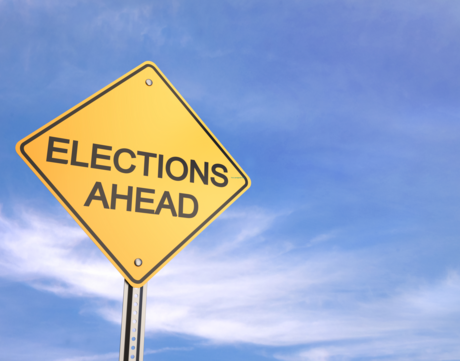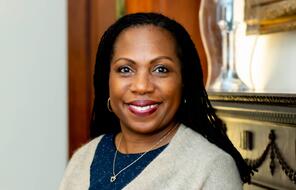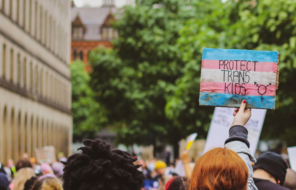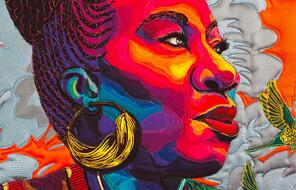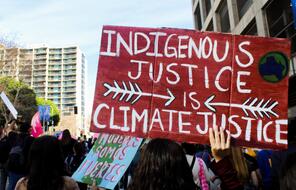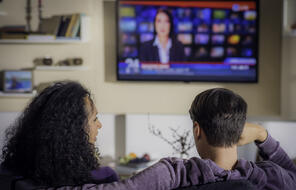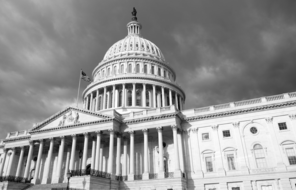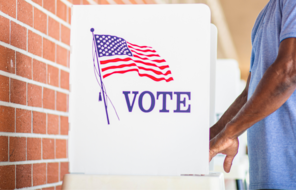The 2024 US election season is in full swing and has been unprecedented and unpredictable in a number of ways. It's very understandable if you are feeling overwhelmed. You are not alone. Our political climate has nearly two-thirds of Americans (65%) saying they always or often feel exhausted when thinking about politics (Pew, 2023). However, there is also hopeful news unfolding as we think about the promise of young people’s participation and engagement in this election. For example, in the last few weeks a surge of young people have registered to vote. Abby Kiesa, CIRCLE's deputy director, shared the following with USA TODAY:
There are over 8 million young adults who have or will turn 18 between the midterm and presidential elections. It's critical that we make sure that young people, regardless of their zip code, race and ethnicity, education, and other experiences, have an entry point [and] way for their voice to be heard in our collective decision-making.
You may be wondering whether schools should teach about voting and elections. Our answer is: Yes! 1 Schools in the US have always played an important role in preparing young people for civic life. Regardless of age and eligibility, young people can play a role in elections by learning about democracy in action, sharing their perspectives, elevating their voices, and raising awareness in informed and ethical ways.
Research studies show that young people’s access to civic learning in school shapes their future voting habits and lifelong civic engagement (Kiesa et al., 2022). In addition, CIRCLE found that 81% of surveyed youth who remembered student voice experiences in high school said they were extremely likely to vote in 2024, compared to 44% of those who did not (Siegel-Stechler, Price & Medina, 2024).
For decades, Facing History has helped young people develop the civic knowledge, skills, and dispositions necessary to understand and participate in democracy. To explore our civic education resources, join us for our upcoming virtual learning series: Democracy in Action: Teaching about the 2024 Election & Educating for Civic Participation focuses on the health of our democracy, voting and elections, and young people's civic participation. The series includes six events (1 to 2 hours each in Zoom) taking place from late August through September 2024. Participants can choose to join all the sessions or individual sessions that are most relevant to their work.
You can also consider these five ways K-12 educators can play a role in teaching about voting, elections, and democratic engagement in non-partisan ways. Explore these resources to find what works best for your students and community context:
1. Build a democratic classroom
A classroom community is in many ways a microcosm of democracy—it should be a place where explicit rules and democratic norms protect everyone’s right to speak; where different perspectives can be heard and valued; where members take responsibility for themselves, each other, and the group as a whole; and where each member has a stake and a voice in collective decisions. The teacher is responsible for safeguarding the community alongside their students, guiding conversations, and ensuring students have voice and agency. Carla Marschall describes a democratic classroom as a place that “engages students in living democratically by promoting values such as inclusion, voice, representation, and participation.” By establishing democratic norms and routines, teachers can foster student-centered discussions as well as civil conversations about civic and political issues as we head into the election season. You can draw on the following resources to develop democratic norms and routines in your classroom:
Resources
- Contracting is the process of openly discussing with your students expectations about how classroom members will treat each other. It is an effective strategy for making your classroom a reflective community.
- You can also use Facing History’s Activities for the First Days of Schools for ideas on how to build and nurture community in your classroom.
2. Explore what makes democracy and voting work
Teachers can support students to learn about the meaning and importance of democracy, democratic processes like voting and elections, what allows democracy to function, and the forces that strengthen or weaken democracy. For example, free and fair elections are the bedrock of our democracy. You can guide students to reflect on the importance of elections and what makes them free and fair. In addition, you can help students bridge federal elections with state and local issues that have an impact on your community. This lesson on Why Local Elections Matter from Learning for Justice helps students explore the ways that decisions by local governments affect their lives. You will find additional resources below that will help you and your students explore what makes democracy and voting work:
Resources
- What Makes Democracy Work? – The nine lessons and eight audio recordings in this collection explore a wide range of themes related to democracy, including: citizen power and civic participation, the rule of law, and the role of a free press.
- Free and Fair Elections – This mini-lesson helps students reflect on the importance of elections, define the phrase “free and fair elections,” learn about the strengths and weaknesses of electoral systems in their region, and consider the actions that individuals, journalists, and politicians can take to strengthen democratic institutions.
- Teaching Resources for the US Elections – Use these resources on voting, media literacy, polarization, and bias to talk about US elections with your middle school and high school students.
3. Deepen students’ media literacy skills
As students read news about the election, they will need media literacy tools to assess the information they find and to consider the ethics of what they read and share. In our media landscape, we are flooded with news, especially during an election season, which makes it hard to tell what information is accurate and reliable. These three resources below can help you build your students’ media literacy skills with the election in mind:
Resources
- Where Do We Get Our News and Why Does It Matter? – Explore media bias using recent news coverage of controversial events and help students think about what healthy news habits they want to adopt.
- How to Read the News Like a Fact Checker – Reading “laterally” is a key media literacy strategy that helps students determine the quality of online sources. This mini-lesson trains students to use this technique to evaluate the credibility of the news they encounter on social media feeds or elsewhere online.
- Developing Media Literacy for Well-being, Relationships, and Democracy – Teach students about media literacy, helping them develop as critical consumers and creators of information, in order to support their well-being, their relationships, and our democracy. This unit was developed for teachers in the United Kingdom but much of the content is applicable to the United States.
4. Foster civil discourse
Learning about and discussing topics related to elections can spark controversy. As we head into the coming school year, it will be especially important to create a classroom where students can speak openly, listen empathically, reflect, learn from each other, and foster civil discourse. Engaging in civil discourse means bringing your mind, heart, and conscience to reflective conversations on topics that matter, in ways that allow you to extend your understanding in dialogue with others. It does not mean prioritizing politeness or comfort over getting to the heart of the matter. The resources below can help you navigate crucial conversations this election season:
Resources
- Fostering Civil Discourse – The ideas and tools in this updated guide help teachers prepare to engage students in civil discourse by bringing their minds, hearts, and consciences to reflective conversations on topics that matter, in ways that allow them to extend their understanding in dialogue with others.
- Teaching About Controversial Issues in Polarized Times – This special conversation with Dr. Diana Hess details how educators can navigate the challenges of discussing polarizing civic topics in their classrooms. At around the 36:00 minute mark, Dr. Hess shares specific recommendations for teaching about voting and elections
5. Center social emotional learning
Drawing on social-emotional learning (SEL) activities can give young people better tools to process the intensity of the election season. This can come in the form of personal reflection, cooperative learning, understanding and managing emotions, or social awareness and empathy. You can explore the resources below to find strategies and tools that will best support your students:
Resources
- Head, Heart, Conscience – This integration of head, heart, and ethics is always important to learning, and it is particularly crucial when students are considering contentious or emotional topics. This teaching strategy can be particularly useful for an initial discussion of complex and emotional current events and to help students clarify their relationship to and their perspective on an event.
- Learn to Listen, Listen to Learn – In a discussion based on the Learn to Listen, Listen to Learn strategy, students reflect on a topic in their journals, share their reflections in a small group, and then present their ideas to the whole class. This is an especially useful discussion format when your class is discussing controversial topics.
- 28 Social-Emotional Learning Activities for the Classroom – You can explore this collection of simple social-emotional learning activities to incorporate SEL in your lesson plans and classroom routines.
While voting or engaging in elections is only one aspect of democratic participation, it is a critical way of ensuring that people have a voice in their government and in the country. Elections also provide an opportunity for young people to see our democracy in action and reflect upon the ways they can make it better. Let’s make sure all young people have a chance this fall to understand, engage, and reflect on this democratic pursuit.
- 1To read more reasons and approaches to teaching about voting and elections, you can explore this article by Diana Hess in Social Education titled "Should Schools Teach Students to Vote? YES!"
https://www.socialstudies.org/social-education/76/6/should-schools-teach-students-vote-yes

